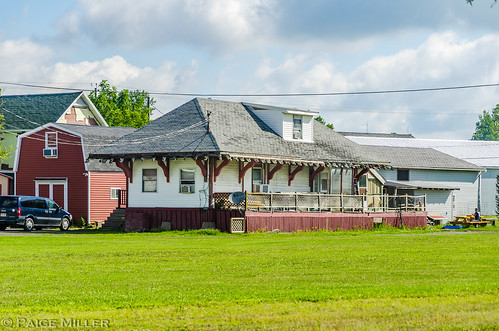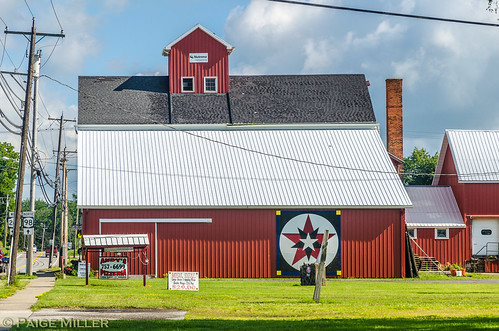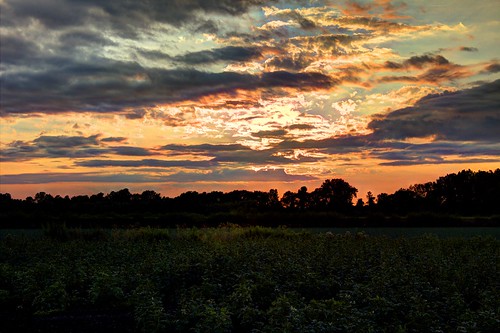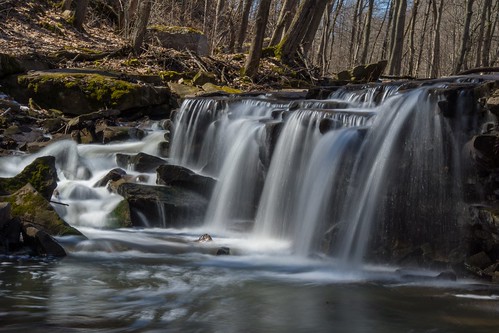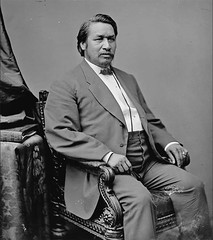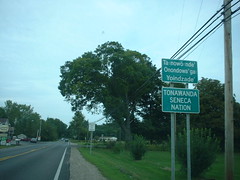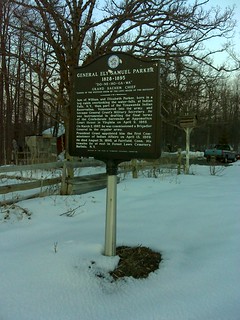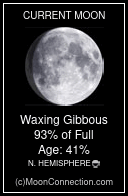, Western New York, has a rich history. Though a larger part of that history surrounds Murder Creek. One event in Murder Creek's history is about the murder of Nellie May Connors by 17-Year-Old Sadie McMullen on October 31st of 1890, when she threw the girl off a bridge across Murder Creek. McMullen also attempted to kill Delia Brown, but Brown survived the fall. It's also said that Sadie McMullen looked to commit suicide and wanted to take others with her. Sources:
The main legend centers around a man named John Dolph, his wife, and Ah-weh-hah, as recounted in "
. Read the comments at that link for more information and how to get a copy of the pdf.
In the spring of the early '20 's a white man named John Dolph came from the Mohawk country and built his cabin a stone's throw from the Wai-ont-hah. Here Dolph with Peter Van Deventer intended to build a saw-mill.
On a certain October evening, Mr. Dolph spread his mill plans on his kitchen table in order to discuss them with his good wife, who was rocking the baby boy in a cradle near the fire. Suddenly a piercing shriek was heard in the woods outside. The agonizing cry was repeated again and sounded nearer. Flinging open the door Dolph saw the figure of an Indian girl rushing toward his cabin. Dashing in, she fell to the floor moaning breathlessly, "Oh, save me, save me!"
Dolph closed and barred the door and had no sooner done so than the burly voice of a man was heard and then the clamor of his fists on the door. "Let me in! Let me in!" he cried as he threw his weight against it.
"You can't come in by trying in any such way," called out Dolph, at the same time motioning his wife to conceal the Indian girl.
Mrs. Dolph lifted up a trap door and led the trembling girl into the mouth of a cavern. Dolph, with musket in hand, then advanced to the door and asked the intruder what business he had.
"My name is Sanders," said the man, "and that girl is a prisoner, whom I am to deliver to the authorities at Grand river, Canada. Her father, a chief placed her in my hands, because she is wayward and wishes to marry a bad Indian. Now let me in, gentleman, please."
Mr. Dolph unbarred the door and the stranger entered, looked around but saw no sign of his prey. Glancing upward he saw an attic opening and a ladder leading to it. Dolph handed him a lighted candle and somewhat nervously Sanders went up but soon came down, angry and excited.
"Give up that girl, she's here, I saw her come in," he snarled. "Where is your cellar?" he asked, glancing down at the floor.
Dolph removed a bit of carpet, handed the stranger a candle and bade him descend, but he found no trace of the girl and no visible outlet of escape, save to the room above. He flew into a rage and muttering threats as he came up the ladder, "she shall not escape me; I shall find her yet," he exclaimed as he walked out into the darkness, to watch if he could any suspicious actions at the house.
It was not long before he saw Mr. and Mrs. Dolph creep down the side of the gorge and enter a clump of bushes.
Sanders had said that he was going to Canfield Tavern on the Buffalo road, and thus Dolph did not believe he was watched. He scanned the path, the woods and stream, but saw no one. A dark figure in the shadow of a great pine escaped his eye. So together the Dolphs went out and crept into the outside entrance of the cavern, which lay a few rods north of the falls, part way down on the right bank. Looking around again in the darkness they satisfied themselves that they were unobserved. The October moon, though bright, could not pierce the depths beneath the autumn foliage. They entered the chamber, stooped low and crept on until they came to a high-arched cavern. There they saw the Indian girl, asleep from pure exhaustion. At the sound of a foot-fall she awakened and in wild-eyed alarm exclaimed, "Where is he?" Mrs. Dolph allayed the girl's fears and drew from her the story of her unhappy adventure. Mr. Uriah Cummings, long the local historian of Akron, relates this strange tale as he found it in Mr. Dolph 's own records. We draw upon his version for the girl's story.

"My name," said the girl, "is Ah-weh-hah, which in the language of the pale-face is Wild-rose. My home is near Spirit Lake, under the cliff about a mile below the Tonawanda Falls. I live there with my aged father, who is a chief of the Senecas and his name is Go-wah-na, meaning 'The Great Fire.'
"My mother has been dead several years, and my poor old father has just been murdered by that dreadful man Sanborn, from whom I had escaped when you opened your door and allowed me to enter.
"For more than a year this dreadful man has been hovering around Spirit Lake trying to get a chance to talk with me. He has urged me to marry him, but my Gray Wolf, my Tah-yoh-ne, is very dear to me and I was to become his wife very soon. But this man Sanders declared to me, that sooner than see me the wife of the Seneca brave, he would murder me and all who stood in his way.
"My father, thinking to avoid trouble, said he would take me to the Cattaraugus Nation where I would be among friends and Tah-yoh-ne could join me there, and thus could we be free from the annoyance of Sanders' threats and entreaties.
"I have had much to do to restrain Tah-yoh-ne from meeting this vile man Sanders. By much entreaty I have induced Tah-yoh-ne to do no harm to the wicked monster, for should they meet and should the pale-face fall, the authorities would not listen to anything we might say in defense of my brave Tah-yoh-ne. They would say he was guilty of murder and must be punished.
"It was this morning that my dear father came to me and told me to prepare for a journey to Cattaraugus.
"Soon all was ready and we started on foot, taking the old trail, the Wah-ah-gwen-ne, leading on to Te-os-ah-wah, a place called 'Buffalo' by your people.
"We had reached the De-on-go-te Gah-hun-da and had sat down to rest and listen to the wondrous Gah-sko- sah-dah, when suddenly we saw the man Sanders close upon the trail behind us.
"My poor aged father trembled with fear and apprehension, for he saw the look of wicked triumph in the hard face; and the offensive manner of the cruel intruder boded nothing but evil for us."
After a brief interval in which the young Indian girl had indulged in paroxysms of grief and anguish, Mrs. Dolph had taken her hand and endeavored to soothe and quiet her, she at last continued her painful story.
"Suddenly the entire manner of the man was changed. He seemed to have relented, and was sorry for his past conduct.
"He smilingly came forward and extending one hand to my poor old father and his other hand to me, he said he wished us to banish from our minds entirely all thoughts of evil intent on his part; that he had made up his mind to cease trying to persuade me to marry him; that he hoped I would be happy with the brave Tah-yoh-ne; that he had decided to leave all behind him, and seek a home in the far West and there try to forget his great love for me; that he hoped all would be forgiven and forgotten; and that even now he was on his way to the great unknown West; he had not thought of seeing us again, but now that we were going in the same direction, he would do all he could to make us remember this journey with pleasure.
"The man spoke so pleasantly that we were deceived as you shall soon learn.
"My father was so pleased at the turn of affairs that he invited Sanders to journey as far as On-tar-o-ga, today; he said that as soon as we reached that 'place of hills and rocks' we would build our campfire, prepare our evening meal and there rest until morning. To all this Sanders readily assented.
"And now as the details were settled, we lingered long at the De-on-go-te Ga-hun-da.
"The moon came up bright and clear; the thunder of the Gah-sko-sah-dah came rolling down the valley and the time passed pleasantly, as Mr. Sanders can be very entertaining whenever he chooses to be.
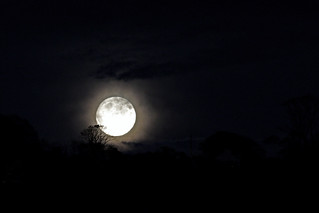
"Finally we resumed our journey. We followed the Wah-ah-gwen-ne westward and came on up through the valley of the Wun-ne-pa-tuc and on up the trail leading westerly out of the valley, and on to the hills of On-tar-o-ga. Presently we came to the accustomed camping-place and soon we had a fire started and our evening meal disposed of, and my dear father sat before the fire contented and happy.
I had arisen and was looking eastward when I thought I saw a light across the head of the valley and not far away. At that instant I heard a blow struck, followed by a groan, and quickly turning I saw my poor father lying prostrate on the ground, face downward, with that fiend Sanborn standing over him with an uplifted club in his hands.
"With the look of a demon the brute sprang toward me intent upon murdering me also. With a shriek of despair and desperation I tied into the forest with the mad man close behind me, brandishing his club and vowing he would brain me. As I ran, it came to me about seeing the light through the trees, and as well as I could I fled in the direction of the light. I ran until I came upon the bridge over the Wun-ne-pa-tuc and there your light was in plain view, and I gathered up all my remaining strength and as I ran I cried, 'Save me,' when your door was suddenly opened for me with the fiend not ten steps behind me. You know the rest."
Ah-weh-hah was a beautiful maiden, so the Dolphs thought, so during her story, they resolved to keep and protect her. She was tall, and her perfect teeth, her soft reddish brown complexion, her expressive black eyes and her long black hair betokened an Indian maiden of the finest type. Her refined manner and soft voice indicated that she had been carefully trained as a woman of the ho-ya-neh class.
Mr. Cummings, who gives her conversation from the Dolph records, says it may seem incredible that this young Indian girl should have a command of English but he believes that Mr. Dolph 's records must be correct. The real answer is that Ah-weh-hah was a student in the mission school at Tonawanda. where the Seneca youth obtained the rudiments of an English education.
The old chief, whose name no previous historian has given, was Big Fire, a veteran of the War of 1812. His body was found by Mr. Dolph in exactly the same spot as described by the girl. There too, he found the smouldering remains of the campfire. Ever since the day of his murder the cross-trail there has been known as the Haunted Corners. The spot is at the east side of Cummings Park.
Dolph after his horrible discovery took the trail for his partner's tavern. When morning came Van Deventer and Dolph buried the remains of the victim of Sander's treachery. The murderer had taken the Buffalo stage at midnight.
When Dolph returned home he found the Indian girl delirious. The news of the tragedy and of Ah-weh-hah's escape had reached the ears of the Indians and Tah-yoh-ne hastened to the refuge of his unhappy sweetheart. Ah-weh-hah was overjoyed at seeing Gray Wolf and begged that he go with her to the grave of her father. So together they journeyed over the trail until they stood by the newly made mound. Here, together they chanted the death song, as a last token of their affection. A grave fire was lighted and the sacred tobacco incense rose to lift the burden of their prayer to the Maker-of-All.
While thus absorbed in their funeral devotions, a sudden step was heard and Sanders jumped from the underbrush, ax in hand. Wolf grabbed his tomahawk and then began a terrible struggle. Losing their weapons in the fray each grabbed their hunting-knives and tore each other's flesh until the blood ran down in gushing streams. Then came a pause and the white man fell backward, dead.
Prostrate, and sickened by the awful sight, lay the girl. Wolf tried to speak but his lips were sealed. He was too weak to comfort his horrified sweetheart, and she too weak from the shock to rise to go to him. He staggered forward and fell. He too had perished at the graveside of her father. With an agonized cry that pierced the forests depths she gave vent to her horror and grief. Mr. Dolph heard the cry and ran the quarter mile to find what new tragedy had occurred. There he found the unhappy Wild Rose, on her knees, swaying back and forth as she moaned between her sobs the death chant. As she looked upward at Dolph her grief-stricken expression revealed such a depth of sorrow that he records that he felt her mind must soon give way.
As she followed him back to his cabin his fears he found were realized. She was incoherent and dazed. Dolph, with the help of a neighbor, buried the two bodies, the Wolf near the Chief and the white man's a little to one side.
Often the Wild Rose would visit the graves of her father and lover to weep and to chant her grief. Mr. Dolph recorded her song as he heard it :
"Oh, my Gray Wolf, my Tah-yoh-ne,
Do you hear the Wild Rose calling,
Hear the song of your Ah-weh-hah,
Hear her tell you how her heart aches?
Why did not the brave Tah-yoh-ne
Take his lonely Wild Rose with him.
O, come back, my own Tah-yoh-ne,
For my heart is breaking, breaking.
You will wait for me, my Gray Wolf.
For I soon shall come to join you.
O, my Gray Wolf, my Tah-yoh-ne,
Hear the voice of your Ah-weh-hah,
Only wait a few days longer
And I then will walk beside you."
When one day the Dolphs missed the Wild Rose they went out to the graveyard so tragically called into existence and there they found her, lying upon the grave of Gray Wolf, lying cold and lifeless. And so beside his grave they buried her. Many were the sincere tears they shed as their tender sympathies reached out in grief for the unhappy Ah-weh-hah.
Now as in former days the lover of midnight strolls may hear the voices of the two lovers as they wander over the modern dust of the ancient trail. The ghosts of the father and the murderers never come back to earth--they who come are only the spirits of the lovers whom destiny forbade a marriage in the earth life, but whom death united in a bond that the years have not broken.
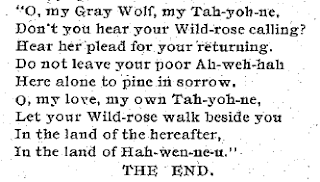 |
| Excerpt from The Haunted Corners by Uriah Cummings |
For many years the story of Big Fire's murder was told at the Parker fireside and the tale of the unhappy Ah-weh-hah never failed to bring tears to the eyes of those who heard it. It had one moral to the Indians; it was: "Look out for white man." But as ever, the warning was in vain^ for as the traditions run, "White man very cunning, he get you pretty soon."
The tragedy of Ah-weh-hah was the tragedy of the people. The white man was on their trail. The "land sharks" had found them, and a life and death struggle for their homes was in progress. The child Ely passed quickly from the old stories, the ancient traditions of his people, to these new stories of wrong. As a child the need of a decisive action had often to be met, and it seemed to have found him ready.
Because of the unhappy conditions among his people Ely , when ten years old, decided to run away. The whole nation was in the utmost confusion. By a system of high-handed fraud every foot of land the Seneca s had was signed away and the order came, "March West." The stoutest heart felt the clutching of emotions that could not "be concealed. There were bickerings and quarrelings and the people were in a pitiful situation. Ely did not wish to stay in a country where confusion, deceit and trickery existed. He resolved to go to Canada where the followers of Brant lived, and to join the Six Nations band on the Grand river. His father consented and he went, accompanied by an older man, a friend of his father.
, when ten years old, decided to run away. The whole nation was in the utmost confusion. By a system of high-handed fraud every foot of land the Seneca s had was signed away and the order came, "March West." The stoutest heart felt the clutching of emotions that could not "be concealed. There were bickerings and quarrelings and the people were in a pitiful situation. Ely did not wish to stay in a country where confusion, deceit and trickery existed. He resolved to go to Canada where the followers of Brant lived, and to join the Six Nations band on the Grand river. His father consented and he went, accompanied by an older man, a friend of his father.
Gah-sko-sah-dah - Name for the Akron Falls, previously called Falkirk Falls when the 'town' of Falkirk existed.
Murder Creek - Previous names: Sulphur Creek and See-Un-Gut (Roar of Distant Waters)
Wah-ah-gwen-ne - An old trail used by the Iroquois used to reach Buffalo (Te-os-ah-wah)
Wun-ne-pa-tuc - Mohegan-Algonkin name for Akron Falls, meaning "Beautiful Waterfall"







